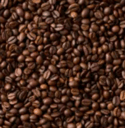Coffee Futures
 Coffee has routinely ranked high on the list for the world’s list of largest agricultural exports. In the tropical agricultural category, it is the world’s most vastly traded commodity. Tracing its origins to as early as the 9th century Africa, coffee is believed to have originated in Kaffe, Ethiopia. In the 15th century in Yemen, the production has since expanded to Africa, South America, and Asia. Technically speaking, coffee is not a commodity; it’s formally considered a fresh produce because its value directly relates to the length of time it is held. Despite this technicality, futures contracts for Grade 3 washed Arabicas have been around for decades and are popular with tropicals and softs traders.
Coffee has routinely ranked high on the list for the world’s list of largest agricultural exports. In the tropical agricultural category, it is the world’s most vastly traded commodity. Tracing its origins to as early as the 9th century Africa, coffee is believed to have originated in Kaffe, Ethiopia. In the 15th century in Yemen, the production has since expanded to Africa, South America, and Asia. Technically speaking, coffee is not a commodity; it’s formally considered a fresh produce because its value directly relates to the length of time it is held. Despite this technicality, futures contracts for Grade 3 washed Arabicas have been around for decades and are popular with tropicals and softs traders.
Coffee Contract Specifications
→ Click Here for Coffee Contract Specifications
Coffee Facts
Brazil is the top producer and exporter for coffee, while the U.S. is the top consumer and importer of coffee.
On average, it takes 3-4 years for a coffee plant to start to bear fruit. When ready to be picked, the fruit, known as the coffee cherry turns a deep shade of red. Coffee is usually harvested by hand or by machine. On a good day, a picker can accumulate up to 200 pounds of coffee cherries. After they are processed, this may yield up to 40 pounds of actual coffee beans. Coffee must be processed very quickly in order to maintain freshness of the cherries. Coffee is processed by two means-a dry or wet method:
- The dry method has been around for thousands of years. This involves laying the cherries out in the sun on a flat surface. The cherries are raked and turned frequently so they do not become spoiled. When the moisture content falls below 11%, the dried cherries are transported to warehouses for storage.
- The wet method involves removing pulp from the coffee cherry, so that the bean dries while only maintaining its parchment skin. The coffee beans are then separated by weight and placed in fermentation takes with water. They are then ready to be dried.
After beans are dried, they go through several more steps that include milling, hulling, and polishing. They are then graded and sorted by hand and/or machine. Milled beans are called “green coffee” and are acceptable for export. Over seven million tons of green coffee is produced every year to support over 2 billion cups of coffee that are drunk every day.
Last updated May 2013.